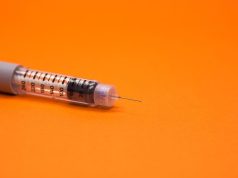Switching from prasugrel to ticagrelor linked to transiently increased levels of platelet inhibition
WEDNESDAY, March 23, 2016 (HealthDay News) — Switching from prasugrel to ticagrelor is associated with a transient increase in platelet inhibition, according to a study published online March 21 in JACC: Cardiovascular Interventions. The research will also be presented at the upcoming annual meeting of the American College of Cardiology, to be held from April 2 to 4 in Chicago.
Francesco Franchi, M.D., from the University College of Medicine-Jacksonville in Florida, and colleagues conducted a prospective, randomized, three-arm trial involving 82 patients on maintenance dual antiplatelet therapy with aspirin and prasugrel. Patients were randomized to continue prasugrel or switch to ticagrelor, with or without a loading dose (LD), for one week.
For patients who switched to ticagrelor, the researchers found that as early as two hours after drug administration, P2Y12 reaction unit (PRU) levels decreased. During the study time course, mean PRU levels remained low, without evidence of drug interactions. The study met the primary end point of noninferiority of ticagrelor (two arms combined) versus prasugrel measured by PRU levels at one week. No increase in rates of high on-treatment platelet reactivity was seen, with rates very low overall throughout the study time course. Irrespective of use of ticagrelor LD, the levels of platelet reactivity were similar.
“Switching from prasugrel to ticagrelor leads to transiently higher levels of platelet inhibition, irrespective of the use of a LD, without evidence of drug interactions,” the authors write.
Several authors disclosed financial ties to pharmaceutical companies, including AstraZeneca, which manufactures ticagrelor and funded the study.
Copyright © 2016 HealthDay. All rights reserved.








